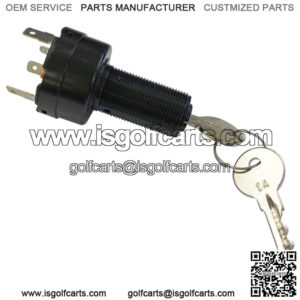Like most drivers, you likely don’t think of the complex series of steps that occur when you get in your car and drive away each morning. Putting the key in the ignition switch and starting the car feels like second nature. However, if your car has ignition switch problems, you may not be able to start the car at all. Ignition switch problems can also cause issues on the road, such as unexpected shutdowns or electrical problems.
To be sure, ignition switch problems are no fun, especially if they’re stopping you from getting to work or school or play. If you’re having an ignition switch problem, taking care of it right away will prevent you from being stranded. Here’s how to fix several common issues.
Wrong Key, Wrong Car
The average car key only has a few hundred thousand combinations. If an automaker sells 200,000 cars per year, chances are pretty good that you could unintentionally unlock someone else’s car door—especially when you consider that car door cylinders have even fewer tumblers than ignition cylinders, which means even fewer combinations.
Of course, if you access the car itself with your key, you likely won’t be able to turn on the ignition because of all those extra tumblers. And on the off chance that you do turn the ignition cylinder, the immobilizer won’t allow you to start the car, because it’s protected by one-in-millions of transponder codes.
How To Fix It: Make sure you’re actually trying to start your own car! This has really happened, much to the chagrin of car owners and inadvertent felons.
Steering Wheel Binding
The ignition cylinder is mechanically connected to the steering wheel lock, so a potential thief cannot steer the car without the key. If you turn off the engine with the steering wheel turned or turn the steering wheel after turning off the engine, the steering wheel lock can bind and prevent you from turning the ignition.
How To Fix It: Fortunately, this is an easy fix. Just turn the wheel back and forth until the ignition cylinder is freed.
Worn Key or Ignition Cylinder
It’s a fact of life that mechanical things tend to wear out, and the same goes for mechanical keys and key cylinders used in your car’s ignition system. You may insert and remove the ignition key thousands of times every year, wearing the key and tumblers ever-so-slightly every time. Heavy keychains can add more stress to the ignition cylinder, increasing wear. After a while, the key may fall out of the cylinder or be unable to turn out of the lock position. Or, an unworn key may not turn a worn ignition cylinder, as they haven’t “worn together.”
How To Fix It: The best way to do this is to get a new lockset, with new keys and a new cylinder. You might consider getting a matched lockset that includes the door and trunk cylinders.
Ignition Switch Fault
The ignition switch itself is connected to the ignition cylinder by a shaft or lever. Inside the ignition switch, several contacts connect vital electrical systems needed to start and run the car. Generally speaking, in the “OFF” position, the ignition switch doesn’t connect anything; in the “ACC” position, the radio or fan may be energized; in the “RUN” position, the engine control module is energized; and finally, in the “START” position, the starter relay is engaged. (These generalizations, depend significantly on year, make, and model.)
Worn ignition switch contacts, temperature problems, or broken springs can all cause the ignition switch to fail, preventing you from starting your car. On the road, poor ignition switch contacts could shut the engine off while driving, which could be dangerous.
How To Fix It: After ensuring the rest of the electrical system is intact, such as fuses, relays, and circuits, replace the ignition switch.
Immobilizer Problems
Modern cars with immobilizers use transponder keys to enable or disable engine starting or running. The chip in the key transmits a specific code, of which there are millions. If this code matches the ones programmed into the vehicle, engine starting is enabled. An incorrect key code, such as from an unprogrammed key or damaged key, would prevent engine starting. Code “confusion,” such as having multiple keys can also occur, preventing ignition. Electrical problems, such as broken immobilizer antenna wiring, which usually encircles the ignition cylinder, can prevent the engine immobilizer from reading transponder codes. Finally, some keys have battery-amplified transponders, so a dead battery might prevent the codes from being read.
How To Fix It: For amplified transponders, replace the battery. Otherwise, you may need to have a professional make sure all keys are programmed to your immobilizer and that the system is electrically sound.
“golf cart ignition switch wiring diagram”
“e-z go golf cart ignition switch diagram”
“golf cart ignition switch replacement”

